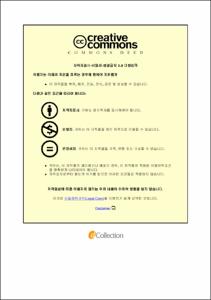Microbial ecosystem management- a sustainable approach to aquaculture
- Alternative Title
- 미생물 생태계의 관리 - 양식을 위한 지속가능한 접근방법
- Abstract
- Over the years, aquaculture has emerged to be one of the most successful ways to produce aquatic species to make up for the declining capture fisheries production. While increasing production through aquaculture, it is of great importance to consider sustainability and profitability b///y reducing the use of antibiotics, fishmeal and fish oil. A number of technologies have been developed for sustainable aquaculture. Biofloc technology and green water technology are microbial management methods that can be used to control disease outbreaks while ensuring growth, health and survival of the cultured species. It can also provide nutrition in a sustainable manner. Over a decade ago, the shrimp industry suffered a series of massive outbreaks of disease commonly known as Early Mortality Syndrome (EMS) or acute hepatopancreatic necrosis disease (AHPND), which was devastating and costly. The use of green water for aquatic animal culture greatly mitigated the effect of Vibrio parahaemolyticus which causes EMS/APHND as well as white spot syndrome virus (WSSV). White shrimps reared in water containing microbial biofloc produced improvements in growth and survival as compared to those reared in clear or natural pond water. Also, biofloc redirects waste nitrogen into the sustainable biosynthesis of amino acids that are used as a protein source for aqua cultured organisms. In this regard, a formerly problematic waste material – water contaminated with ammonia can serve as a resource in the culture of shrimps, tilapia, mussels and other aquatic organisms. Therefore, biofloc, green water culture, recirculation aquaculture system (RAS) and other microbial management methods could discourage pathogens, reduce stress and contribute to sustainable aquatic ecosystems.
- Issued Date
- 2021
- Awarded Date
- 2021. 8
- Type
- Dissertation
- Publisher
- 부경대학교
- Affiliation
- 부경대학교 세계수산대학원
- Department
- 세계수산대학원 양식기술전공
- Advisor
- Christopher L. Brown
- Table Of Contents
- I. Introduction 1
1. Overview of microbial management 4
II. Biofloc Technology 5
1. Biofloc use in the shrimp industry 6
1-1. Nursery and grow-out 6
1-2. Breeding 7
1-3. BFT as a tool for managing diseases 9
2. Aquaponics 9
3. Recycling ammonia into food 10
4. C/N Ratio 11
5. Nutritional Composition of Biofloc 14
6. Waste management and reduced water utilization in Biofloc System 14
7. Microbial Community in biofloc 15
III. Green water technology 18
1. Use of green water in the shrimp industry 20
IV. Recirculation aquaculture system (RAS) 24
1. Importance of RAS 25
2. r/K selection 26
3. Nitrogen recycling 28
4. Importance of biofilters 29
V. Conclusions 31
VI. References 33
- Degree
- Master
- Files in This Item:
-
-
Download
 Microbial ecosystem management- a sustainable approach to aquaculture.pdf
기타 데이터 / 846.18 kB / Adobe PDF
Microbial ecosystem management- a sustainable approach to aquaculture.pdf
기타 데이터 / 846.18 kB / Adobe PDF
-
Items in Repository are protected by copyright, with all rights reserved, unless otherwise indicated.